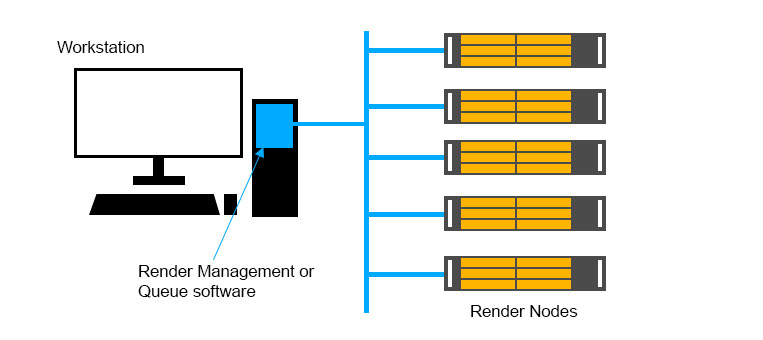In recent years, not only user demand for visual content has increased, but the quality of that content has grown as well. Graphics for games, films and animated videos, architectural and design projects - all require the use of render farms. Cloud rendering services have grown in popularity in recent years, mainly because they offer a number of benefits to artists, architects, movie studios, etc. In this article, we will take a closer look at the business benefits of render farms.
What is rendering and how does it work?
Rendering is the process of creating two- and three-dimensional images that can be either stand-alone projects or part of video clips (frames). With rendering software artists can turn a sketch into a realistic image with textures, shadows, lighting and detail. The sketch is called a scene. The complexity of the rendering process depends on the job and the quality of the final image, so it can take from a few minutes to several hours or even days.
What is a render farm?

GPU render farm is a cluster of powerful servers with software such as 3Ds Max, Cinema 4D, After Effects and others installed and configured.
Scene rendering is split across dozens of servers in the render farm, with each server rendering its portion of the frame in parallel with other servers. By dividing the rendering job between machines, you can significantly reduce rendering time, which makes the overall production cycle much faster and easier. So you can render large projects in 1-2 hours.
Advantages of cloud render farms
There are many advantages to using a render farm in the cloud:
-
Time savings. Especially if you're on a deadline and your computer system won't be able to finish rendering in time. You can also work on your computer while the project is being rendered on the render farm.
-
Cost savings. An in-house render farm is very expensive. A commercial render farm can save you money.
-
Support. Most render farms have technical support to help with any technical issues during the rendering process.
-
Ease of use. Cloud render farm providers usually have their own software that is embedded into the 3D application being used, making the render farm much easier to use.
-
Minimal risks. Computers can overheat or shut down during rendering. These problems can be frustrating, especially when you are working to a tight deadline. By sending your project to a render farm, you eliminate these situations as they employ experienced professionals who guarantee a smooth render.
In-house vs online render farm
The cost of running a GPU render farm is quite high. Not only do you need state-of-the-art equipment, but you also need constant electricity. Maintenance and infrastructure costs are high. Additionally, there are expenses for software licenses and different plug-ins needed for various animations.
When it comes to cloud rendering, you only pay for the time you use the service. The cost of a render farm is based on either the number of render nodes working for you per hour or the total processing power, measured in gigahertz for the CPU and in OB for the GPU.
Cloud rendering farms can dynamically scale resources based on workload, allowing you to run projects of any scale without worrying about hardware limitations or the financial burden of building out your own capacity for temporary needs.
The only argument in favour of an in-house farm is probably security. For confidential projects or those bound by strict non-disclosure agreements, security is of utmost importance. Therefore keeping all data within studio premises significantly reduces the risk of information leakage and intellectual property theft.
Render farms are powerful tool for designers and animators to save time and resources by outsourcing part of the rendering production process. They offer significant advantages over local rendering and can help you create higher quality work in less time.



